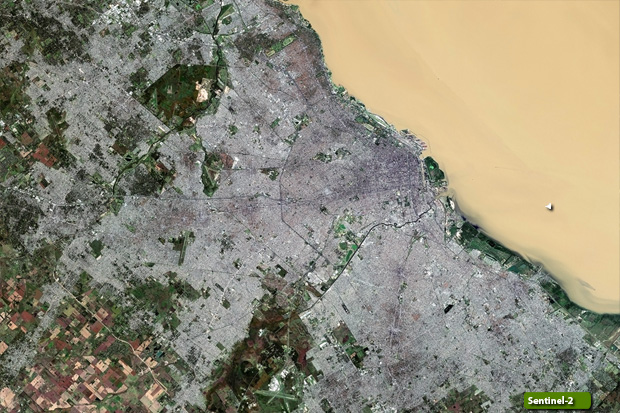|
Buenos Aires, Argentina
Buenos Aires is the capital and most populous city of Argentina. The city is located on the western shore of the estuary of the Río de la Plata, on the South American continent's southeastern coast. "Buenos aires" can be translated as "fair winds" or "good airs", but the first one was the meaning intended by the founders in the 16th century, by the use of the original name "Real de Nuestra Señora Santa María del Buen Ayre". The Greater Buenos Aires conurbation, which also includes several Buenos Aires Province districts, constitutes the fourth-most populous metropolitan area in the Americas, with a population of around 17 million. The city of Buenos Aires is neither part of Buenos Aires Province nor the Province's capital; rather, it is an autonomous district. In 1880, after decades of political infighting, Buenos Aires was federalized and removed from Buenos Aires Province. The city limits were enlarged to include the towns of Belgrano and Flores; both are now neighbourhoods of the city. The 1994 constitutional amendment granted the city autonomy, hence its formal name: Ciudad Autónoma de Buenos Aires (Autonomous City of Buenos Aires). Its citizens first elected a chief of government (i.e. mayor) in 1996; previously, the mayor was directly appointed by the President of the Republic. Buenos Aires is considered an 'alpha city' by the study GaWC5. Buenos Aires' quality of life was ranked 81st in the world and one of the best in Latin America in 2012, with its per capita income among the three highest in the region. It is the most visited city in South America, and the second-most visited city of Latin America (behind Mexico City). Buenos Aires is a top tourist destination, and is known for its preserved Spanish/European-style architecture and rich cultural life. Buenos Aires held the 1st Pan American Games in 1951 as well as hosting two venues in the 1978 FIFA World Cup. Buenos Aires will host the 2018 Summer Youth Olympics and the 2018 G20 summit. Buenos Aires is a multicultural city, being home to multiple ethnic and religious groups. Several languages are spoken in the city in addition to Spanish, contributing to its culture and the dialect spoken in the city and in some other parts of the country. This is because in the last 150 years the city, and the country in general, has been a major recipient of millions of immigrants from all over the world, making it a melting pot where several ethnic groups live together and being considered as one of the most diverse cities of Latin America. More information is available on Wikipedia

Our tour today stops over Buenos Aires, the capital and most populous city of Argentina, located on the western bank of the River Plate, inland from the Atlantic Ocean. Founded in 1580, Buenos Aires is one of the world's great metropolises. In the early 1990s, more than one-third of the country's population lived within the large urban area of greater Buenos Aires; some 2.9 million of these were in the city proper, coextensive with the Federal Capital district, established in 1880. With this demonstration of images taken by the Sentinel-2 (Optical Sensor) and Sentinel-1 (Radar SAR instrument), we aim to show the field of applications that the Copernicus satellite family can cover.   View Sentinel-2 high resolution image (JPG 6.6 MB) View Sentinel-1 high resolution image (JPG 6.2 MB)
|
|||||||||||||||||||

